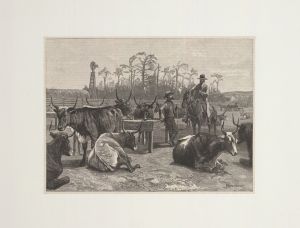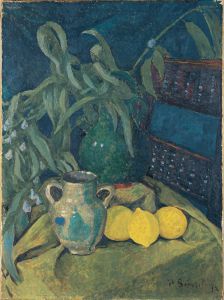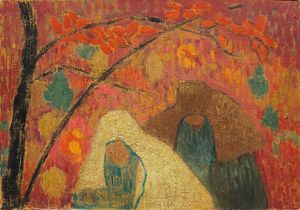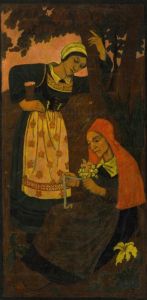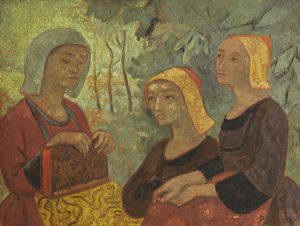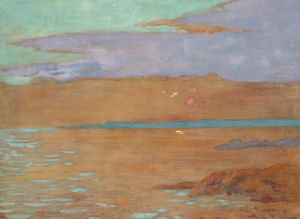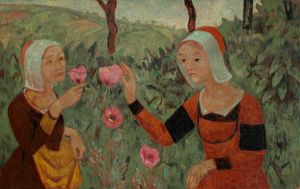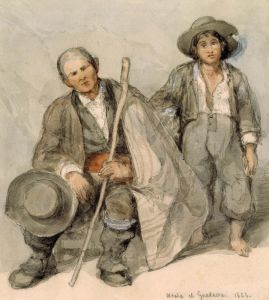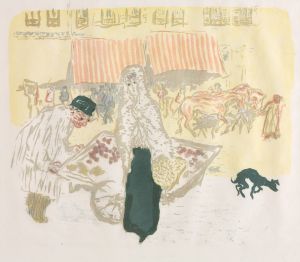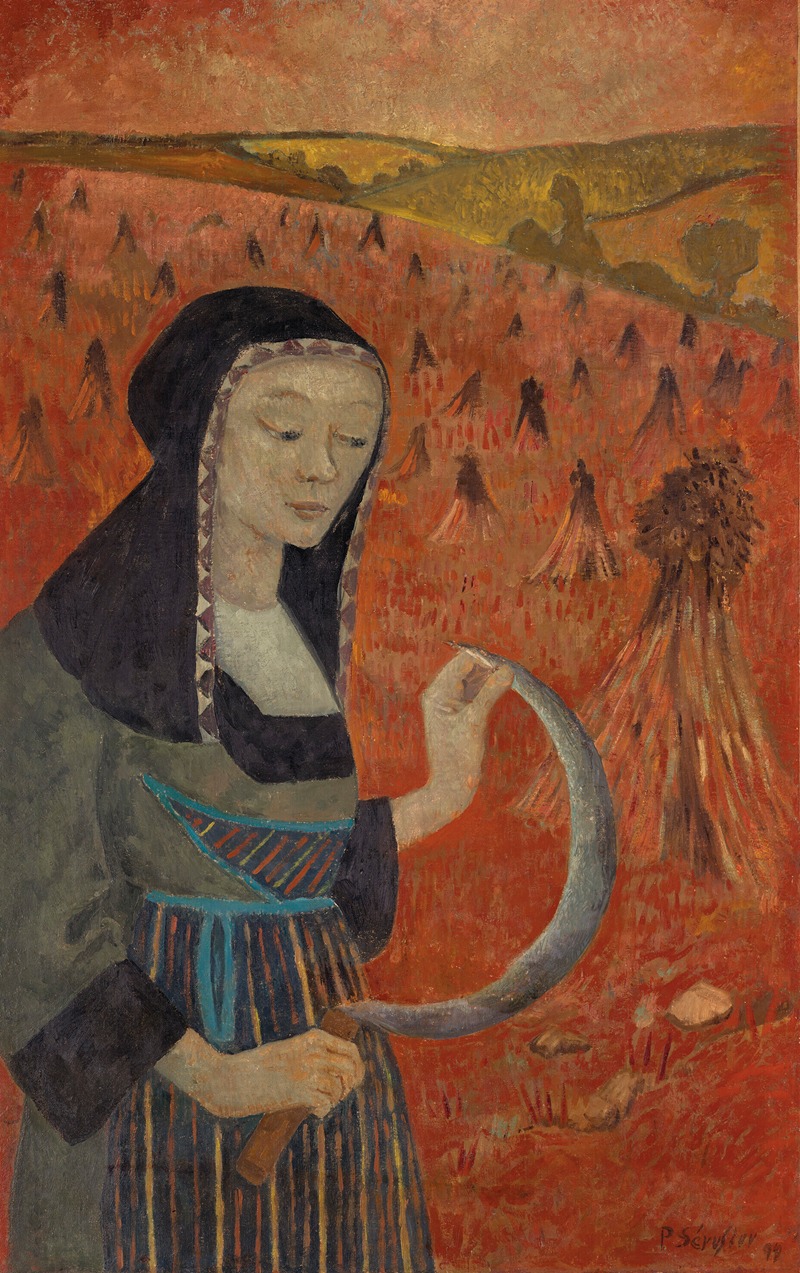
Bretonne à la faucille dans un champ de blé noir
A hand-painted replica of Paul Sérusier’s masterpiece Bretonne à la faucille dans un champ de blé noir, meticulously crafted by professional artists to capture the true essence of the original. Each piece is created with museum-quality canvas and rare mineral pigments, carefully painted by experienced artists with delicate brushstrokes and rich, layered colors to perfectly recreate the texture of the original artwork. Unlike machine-printed reproductions, this hand-painted version brings the painting to life, infused with the artist’s emotions and skill in every stroke. Whether for personal collection or home decoration, it instantly elevates the artistic atmosphere of any space.
Paul Sérusier's painting Bretonne à la faucille dans un champ de blé noir (translated as Breton Woman with a Sickle in a Field of Buckwheat) is a work that reflects the artist's connection to the Symbolist movement and his interest in the rural life of Brittany. Sérusier, a French Post-Impressionist painter, was a key figure in the Nabis group, which sought to move beyond Impressionism by emphasizing symbolic and spiritual elements in art.
This painting depicts a Breton woman standing in a field of buckwheat, holding a sickle. The subject matter aligns with Sérusier's fascination with the traditional customs and landscapes of Brittany, a region in northwestern France known for its distinct cultural identity. The use of buckwheat, a staple crop in Brittany, further emphasizes the regional specificity of the scene. The woman’s attire, likely traditional Breton clothing, adds to the cultural authenticity of the work.
Sérusier's style in this painting is characterized by simplified forms and a focus on flat areas of color, which were hallmarks of the Nabis movement. The Nabis were influenced by Paul Gauguin, and Sérusier himself was deeply inspired by Gauguin's teachings during his time in Pont-Aven, a small town in Brittany that became a hub for avant-garde artists. Sérusier's use of bold, non-naturalistic colors and his emphasis on the decorative quality of the composition reflect the influence of Gauguin and the broader Symbolist aesthetic.
The painting is also notable for its spiritual undertones. The Nabis often sought to imbue their works with a sense of the mystical or transcendent, and Sérusier's depiction of the Breton woman in a serene, agrarian setting may suggest a connection to the land and a harmonious relationship with nature. This aligns with the Symbolist movement's broader interest in exploring themes of spirituality and the unseen.
While the exact date of the painting is not specified, it likely belongs to the period when Sérusier was actively working in Brittany and engaging with the Nabis group, roughly the late 1880s to the early 1900s. The painting is an example of Sérusier's ability to merge his interest in regional culture with the innovative artistic techniques of his time.
As of now, the specific location of the painting, whether in a museum or private collection, is not widely documented. However, it remains an important piece within Sérusier's body of work, illustrating his contributions to the development of modern art and his role in the transition from Impressionism to more abstract and symbolic forms of expression.





